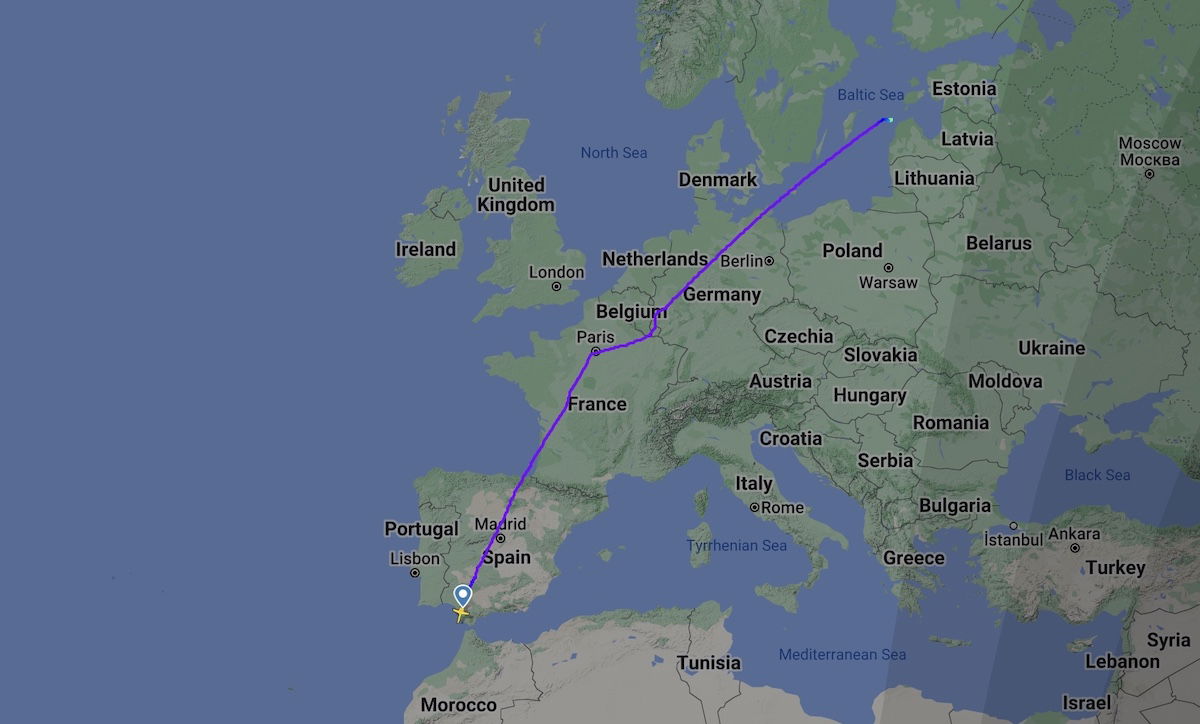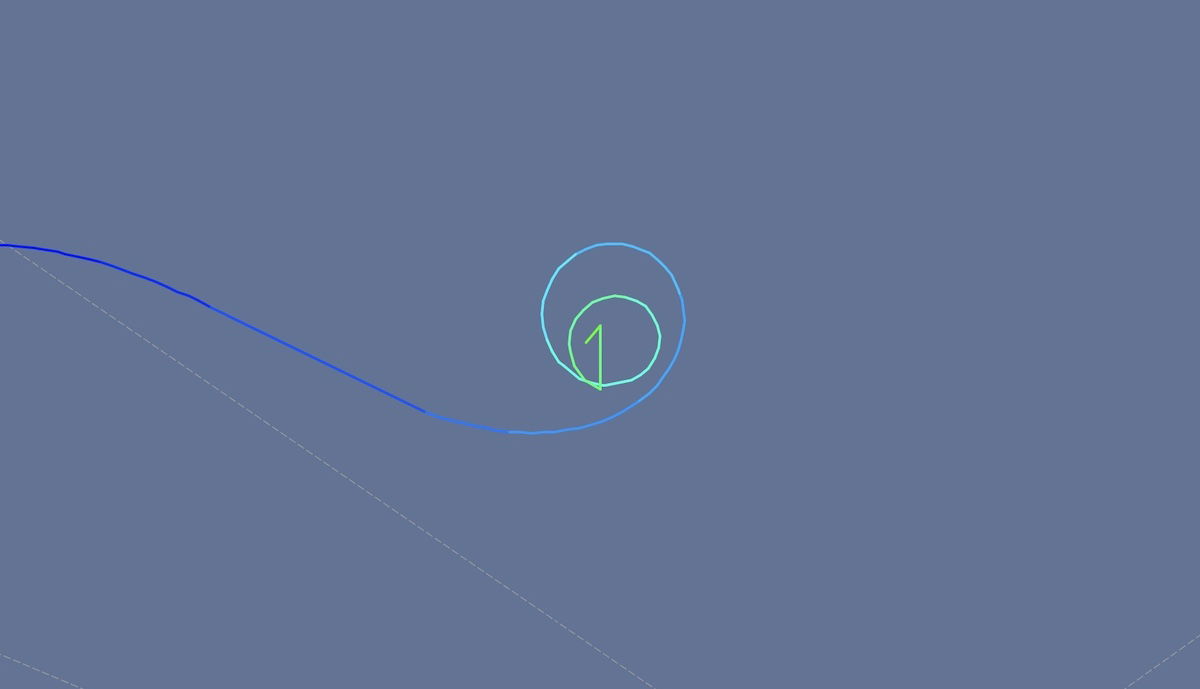A private jet that was supposed to fly from Spain to Germany crashed today, and the circumstances surrounding it are unusual.
In this post:
Jet loses contact with ATC, keeps flying
This incident involves a 42-year-old Cessna 551 with the registration code OE-FGR. The Austrian-registered private jet, which allegedly had four people onboard, was supposed to fly from Jerez, Spain (XRY), to Cologne, Germany (CGN). The plane had previously flown on Saturday, August 27, 2022, from Cologne to Jerez, so it was on the ground there for eight days.
The plane took off at 12:57PM UTC today, and the 1,173-mile flight would ordinarily take just over two hours to complete.
The plane eventually left Spain’s airspace, and then flew over France, Luxembourg, and Belgium, where some turns were made. The plane then entered German airspace, which is where air traffic controllers lost contact with the pilots. Rather than landing in Cologne, the plane continued flying over the Baltic Sea.
Fighter jets were dispatched to check on the plane, and reportedly saw no movement in the cockpit. After being in the air for 4hr51min (and presumably running out of fuel), the plane ended up crashing in the Baltic Sea, with the plane showing a descent rate of 8,000 feet per minute at the very end. The plane was around 25 miles from Ventspils, Latvia, at this point.


Search and rescue efforts are underway for the plane.
What a sad situation
We’ll see what comes out of search and rescue efforts. My thoughts are with those onboard and their families, because this is a terrible situation.
It’s too early to know what happened, and it’s not worth speculating, especially with so many details missing. The fact that the plane just flew in a straight course since losing contact, and a fighter jet wasn’t able to see pilots in the cockpit, are the only clues we have so far.
Bottom line
A Cessna 551 crashed in the Baltic Sea, after overflying its destination, and not having any contact with air traffic controllers for an extended period of time. Rescue efforts are now underway. How sad…
(Tip of the hat to Klaus)





According to media reports it was Karl-Peter Griesmann and his family onboard returning from the summer house in Spain, apparently Mr. Griesmann piloted the aircraft himself. The fighter jets that scrambled saw no one in cockpit, they were likely uncouncious for quite some time. RIP
sounds like same situation when Payne Stewart's jet crashed. Sudden pressurization failure didnt get to oxygen in time
According to news reports, contact to OE-FGR was lost shortly after take-off from Jerez. It seems like the autopilot climbs to 36.000 ft and continues the journey via Poitiers, Paris, Luxemburg to Euskirchen – as it was supposedly saved in the Flight Management System. In Euskirchen, supposedly the pilot wanted to take over for approach into Cologne (15:50 UTC). Since the pilot was seemingly unconscious, the plane just continued in a straight line for the...
According to news reports, contact to OE-FGR was lost shortly after take-off from Jerez. It seems like the autopilot climbs to 36.000 ft and continues the journey via Poitiers, Paris, Luxemburg to Euskirchen – as it was supposedly saved in the Flight Management System. In Euskirchen, supposedly the pilot wanted to take over for approach into Cologne (15:50 UTC). Since the pilot was seemingly unconscious, the plane just continued in a straight line for the next 1h41m (17:36 UTC) on course 54 degrees. It then starts descending and turning to right to course 116 degrees. While I was hoping that the pilot was trying to land in Ventspils, it is probably that instead the right engine failed and therefore the change of course was initiated. It seems like 3 minutes later (17:39 UTC) the left engine also failed as OE-FGR continued to fly straight forward on 116 degrees before starting to loose speed and altitude (17:40 UTC), eventually crashing (17:42 UTC) in the Baltic Sea.
Waiting for @Eskimo to make light of this tragedy. Like when she made tasteless 'jokes' about those poor 22 tourists burned and buried to death in the N.Z. volcano eruption in 2019 and other similar airlines/tourism tragedies.
Clearly the ability to type does not confer brains.
Links please. You brought it up so many time, I'm sure you have brains to cite your sources.
@eskimo. yes he says stuff with no info
Question so what do the authorities do in a situation like this if the plane looks like it will crash in a congested area possibly causing loss of lives on the ground. Shoot it down? What is the contingency plan?
My mind also went to the Payne Stewart crash. The insidious thing about cabin depressurizations is that they can happen slowly enough that the pilot doesn’t realize the lack of oxygen has seriously impaired their judgement until it’s too late for them to make a correct decision that might help them get back on the ground safely.
So sad,and nothing can be done in these situations.
if the plane theoretically had landed at sea and the persons were saved, would they have been dead already by lack of oxygen?
Arent therewarning sensors for pressurization?
yes, there should have been sensors
It is mind-numbing that the pilot reported pressurization problems but did not put on an oxygen mask and descend until the problem was resolved or land.
Mr. Tim Dunn: that blows my mind.....
The latest newsreports in Europe are telling that there had been a report of problems with the åressurization, right after the take off (German newspaper Bild), and the passengers are said to having been a couple with their daughter, with one pilot.
pressurization, not åressurization
Payne Stewart?
Does anyone know why the jet turned to the right some minutes prior to descending?
It stalled. No fuel, no engines, stall.
Of course we do.
I agree with Trey -- also reminds me of the Learjet 35A (N47BA) incident of 1999. https://simpleflying.com/1999-private-jet-ghost-plane-accident/
Sounds like the Payne Stewart crash. https://en.wikipedia.org/wiki/1999_South_Dakota_Learjet_crash
Sad. It sure reminds one of the Payne Stewart crash. Cabin depressurized slowly, everyone passed out or died, and it just kept going until it ran out of fuel and crash landed in a field.
This ^
Very tragic. Too early maybe to speculate, but it sounds eerily similar to Helios 522.
That's what I was thinking too
The comments on this one should be great.
And by “great” I mean horrible.
*grabs popcorn*
For now, the most horrible comment is made by you grabbing popcorn.